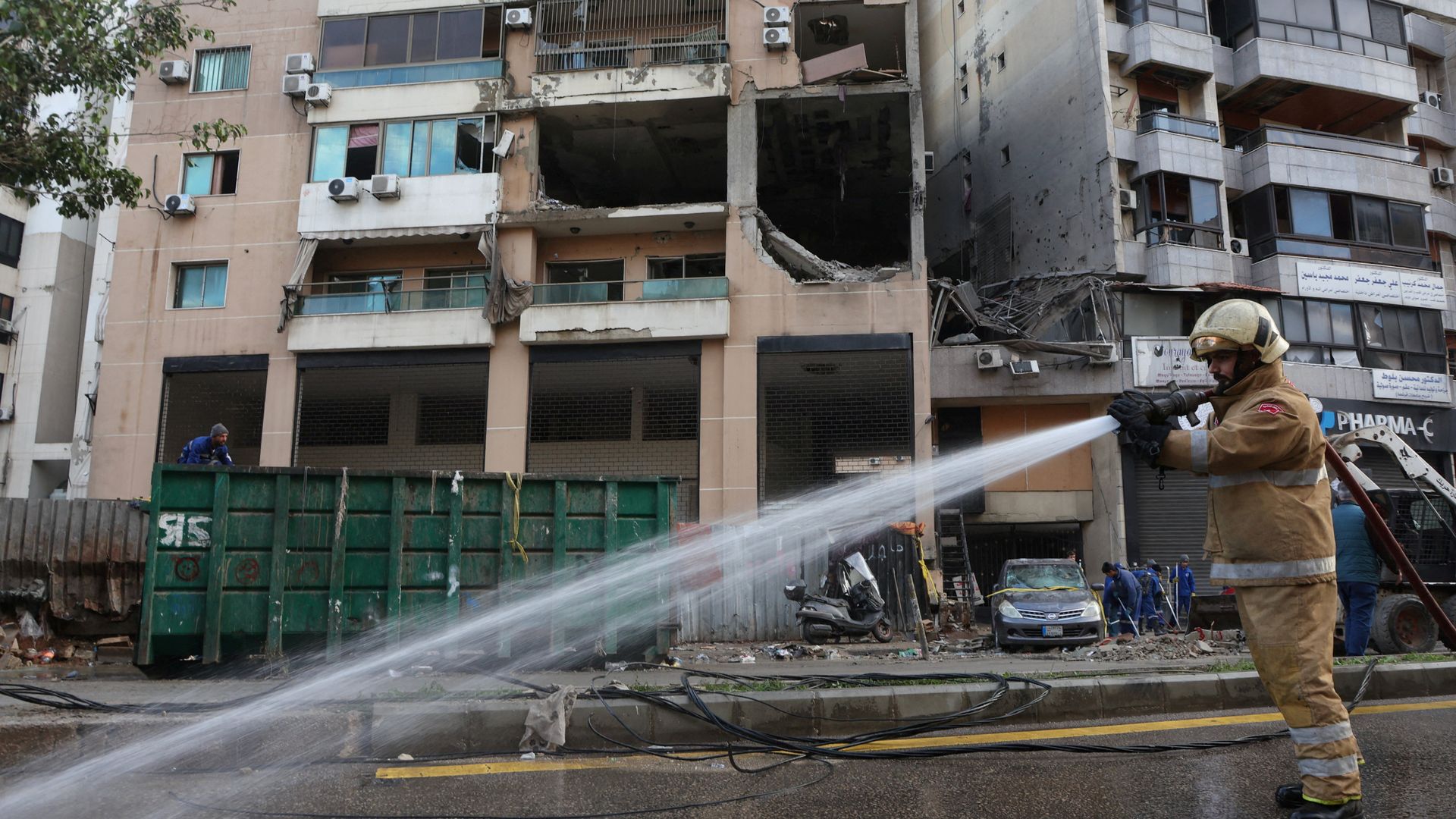Lebanon is once again on tenterhooks. Indeed, the whole region is.
And there are very few who will bet against yet more bloodshed in the coming days and weeks.
But will Saturday’s deadly strike on a football pitch in the occupied Golan Heights be what tips the region into all-out war?
Middle East latest: ‘All-out war nearing’, Israeli minister says
Right now, it is still too early to say but the potential is definitely there and that is what is so frightening about this gradual escalation.
Yet in the capital Beirut, there are the sounds of children playing along the beach and the restaurants are abuzz with customers while streets are filled with Lebanese shoppers.
“We have lived like this for years,” said one seasoned Lebanese resident.
“We go on with life as normal. There is no alternative.”
But – and it is a big but – there’s no doubt this is a very dangerous juncture in an already very dangerous escalating sequence of terrible events.
Hezbollah was uncharacteristically quick to deny any involvement in the deaths of largely young people who were playing football in Majdal Shams, the remote border town in the Golan Heights (which the bulk of the international community still recognises as Syria but is occupied by Israel).
They have not denied any attacks in the nine months of previous crossfire attacks.
Please use Chrome browser for a more accessible video player
So this is worth noting because it is not typical behaviour or a typical response from the Iran-backed Lebanese group which has been mounting attacks inside Israel since 8 October.
In a written statement to Reuters, Hezbollah said: “The Islamic resistance has absolutely nothing to do with the incident and categorically denies all false allegations in this regard.”
Read more:
Why the Golan Heights is a Middle East flashpoint
Israel strikes Hezbollah targets ‘deep inside’ Lebanon
‘At least 30 killed’ in Israeli strike on Gaza school
Hezbollah – along with a range of other fighting groups which form the so-called axis of resistance headed by Iran – has been fighting in parallel to the Israeli war in Gaza, it insists, in an attempt to force a ceasefire.
The trading of almost daily crossfire attacks between the Lebanese group and the Israeli military has led to nearly 200,000 people from both sides of the border fleeing their homes.
Israel has attacked targets in Lebanon nearly four times as much as Hezbollah has hit Israel.
The attack which struck the predominantly Druze town of Majdal Shams would seem to be very much out of kilter to the pattern of attacks previously mounted by Hezbollah against Israel for the past nine months.
Most of the inhabitants in Majdal Shams are Syrian Arabs rather than Israelis.
Many actively reject Israeli naturalisation and consider themselves Syrians under Israeli occupation.
Please use Chrome browser for a more accessible video player
Hezbollah has fought alongside Syrian regime troops in support of Bashar al Assad in the past and continues to be an ally (albeit with a chequered history).
But both Israel and the US are categorically blaming Hezbollah for the football pitch attack, despite its denials.
The air is thick with diplomatic traffic across the region and the Atlantic in an attempt to de-escalate the situation.
Analysis:
Signs Israel not expecting imminent escalation
The US has asked the Lebanese government to try to restrain Hezbollah – while the Lebanese authorities are asking the US to restrain Israel.
UN urges ‘maximum restraint’
The UN has issued its own desperate plea for calm saying it is in contact with both Lebanon and Israel.
In a joint statement from the UN special coordinator for Lebanon and UNIFIL (United Nations Interim Force In Lebanon), they urged “maximum restraint” warning a failure to do so could “ignite a wider conflagration that would engulf the entire region in a catastrophe beyond belief”.
Kim Ghattas, an award-winning Lebanese journalist and author said: “We are absolutely at a very dangerous point.”
Please use Chrome browser for a more accessible video player
We were with the UN peacekeepers just a week or so ago along the “blue line” which marks the division between Israeli and Lebanese territory and made our way through Kfar Kila, one of the towns hit overnight by the Israel Defence Forces (IDF).
It is already obliterated with almost every building hit or affected structurally.
Ghost towns
All along the blue line, communities on both sides are shattered ghost towns.
Everyone is now waiting for the return to Israel of Prime Minister Benjamin Netanyahu to see how events might unfold.
Ms Ghattas wrote on X: “This is all unfolding as negotiators meet in Rome to discuss a ceasefire.
“Netanyahu is en route back to Israel and the Israeli security cabinet is meeting at 6pm local time. Everyone is buying some time.”
So, the waiting goes on for the Lebanese – and they carry on as usual in anticipation that something is coming, they just don’t know what.
Keep up with all the latest news from the UK and around the world by following Sky News
Hala Awada, 62, who lives in the southern suburbs of Beirut told Sky News: ”We’ve been through many wars. We are used to this.
“Of course, we have a Plan B in case our neighbourhood is bombed.
“Yesterday, my daughter was expecting something on Beirut and she prepared to leave. But I’m staying. I’m scared of strikes though, that’s for sure.”
Be the first to get Breaking News
Install the Sky News app for free
Lebanese journalist Hwaida Saad explained: “We cannot turn away. What is the alternative?
“This is our mentality as Lebanese. We are tired and exhausted by all these crises. We cannot do anything so let’s live our lives anyway. If we panic, what good will that do?”
Alex Crawford reports from Beirut with camera Jake Britton, specialist producer Chris Cunningham and Lebanon producers Hwaida Saad and Jihad Jneid






